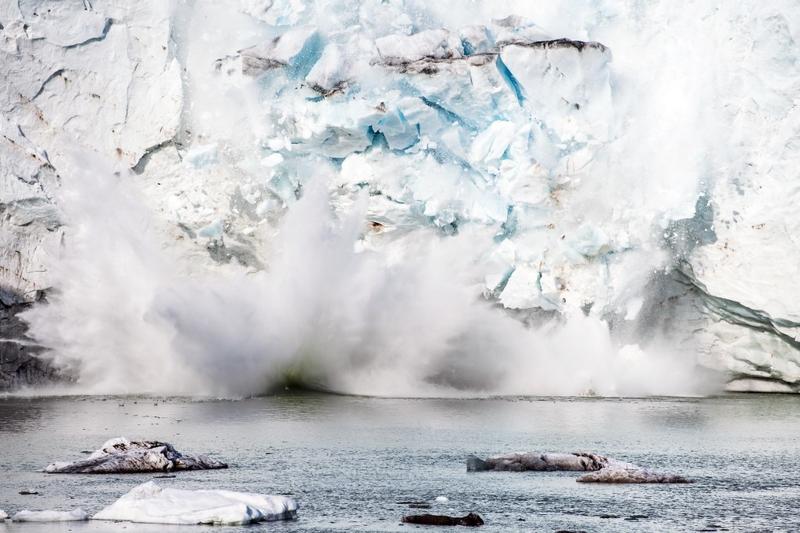 (FILES) This file photo taken on August 17, 2019 shows an iceberg calving with a mass of ice breaking away from the Apusiajik glacier, near Kulusuk, a settlement in the Sermersooq municipality located on the island of the same name on the southeastern shore of Greenland. (JONATHAN NACKSTRAND / AFP)
(FILES) This file photo taken on August 17, 2019 shows an iceberg calving with a mass of ice breaking away from the Apusiajik glacier, near Kulusuk, a settlement in the Sermersooq municipality located on the island of the same name on the southeastern shore of Greenland. (JONATHAN NACKSTRAND / AFP)
Greenland's ice sheet has likely melted past the point of no return and has already caused a significant rise in sea levels, according to new research.
The ice sheet covers roughly 80 percent of Greenland and was formed by layers of compressed snow that accumulated over the past 100,000 years
A study in the scientific journal Nature said that no matter how quickly the world reduces climate-warming emissions the largest ice mass in the Northern Hemisphere is now likely to melt away.
The ice sheet covers roughly 80 percent of Greenland and was formed by layers of compressed snow that accumulated over the past 100,000 years.
Scientists studied data on 234 glaciers across the Arctic territory for 34 years until 2018. They found that annual snowfall was no longer enough to replenish glaciers with the snow and ice being lost to summertime melting.
ALSO READ: Europe's record heatwave threatens Greenland ice sheet
The ice sheet has been shrinking for several decades due to increased meltwater on its surface, higher rates of evaporation and submarine melting, which happens when the comparatively warm ocean water touches the glacier.
If Greenland's ice goes, the water released would push sea levels up by an average of 6 meters-enough to swamp many coastal cities around the world, though complete melting of the ice sheet would not be possible until several more decades of sustained melting.
Glaciologist Ian Howat said Greenland "is going to be the canary in the coal mine, and the canary is already pretty much dead at this point".
The Arctic has been warming at least twice as fast as the rest of the world for 30 years, while polar sea ice hit its lowest extent for July in 40 years.
Oceans have already been impacted by the melting ice sheet and are rising about a millimeter on average per year.
Largest single contributor
While this increase may seem small, ice melting is the largest single contributor to global sea level rise, the study's lead author Michalea King told CNN.
"Greenland's glaciers have passed a tipping point of sorts, where the snowfall that replenishes the ice sheet each year cannot keep up with the ice that is flowing into the ocean from glaciers," King said.
The researchers said that the entire ice sheet has experienced periods of melting at different points in time since the 1980s, but an acceleration of melting between 2000 and 2005 led to an irreversible "step-increase" of ice loss.
READ MORE: Greenland village watches looming iceberg, weather forecast
Even if global temperatures somehow managed to stop rising or even decrease, the ice sheet would continue to melt because its functioning is out of equilibrium, the study stated.
The sobering findings should spur governments to prepare for sea-level rise, King said.
"Things that happen in the polar regions don't stay in the polar region," she said, adding that containing global temperature rise could still slow the rate of ice loss.
jonathan@mail.chinadailyuk.com


